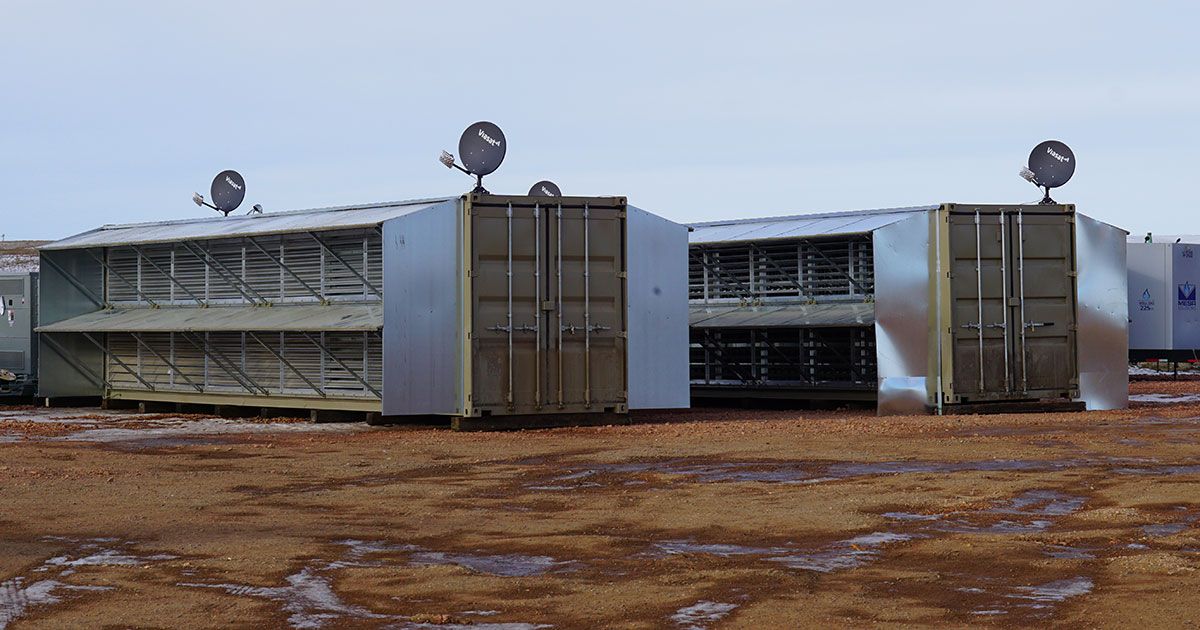Waste Natural Gas Powers Computers Seeking Coronavirus Cure
In a partnership that seems par for the course in these strange pandemic times, waste natural gas is powering a computing project that's searching for a COVID-19 therapy.
The natural gas, a byproduct of oil drilling, would otherwise be burned in air, a wasteful practice called flaring. It's instead being converted to electricity that helps drive computationally intensive protein-folding simulations of the new coronavirus at Stanford University, thanks to Denver-based Crusoe Energy Systems, a company which "bridges the gap between the energy world and the high-performance computing world," says CEO Chase Lochmiller.
Crusoe's Digital Flare Mitigation technology is a fancy term for rugged, modified shipping containers that contain temperature-controlled racks of computers and data servers. The company launched in 2018 to mine cryptocurrency, which requires a tremendous amount of computing power. But when the novel coronavirus started spreading around the world, Lochmiller and his childhood friend Cully Cavness, who is the company's president and co-founder, knew it was a chance to help.
Coronaviruses get their name from their crown of spiky proteins that attach to receptors on human cells. Proteins are complicated beasts that undergo convoluted twists and turns to take on unique structures. A recent Nature study showed that the new coronavirus the world is now battling, known as SARS-CoV-2, has a narrow ridge at its tip that helps it bind more strongly to human cells than previous similar viruses.
Understanding how spike proteins fold will help scientists find drugs that can block them. Stanford University's Folding@home project is simulating these protein-folding dynamics. Studying the countless folding permutations and protein shapes requires enormous amounts of computations, so the project relies on crowd-sourced computing.
 Photo: Crusoe Energy Systems Crusoe Energy Systems's mobile data centers are installed directly on an oil well pad to conduct compute-intensive applications, and are powered by waste natural gas.
Photo: Crusoe Energy Systems Crusoe Energy Systems's mobile data centers are installed directly on an oil well pad to conduct compute-intensive applications, and are powered by waste natural gas. So Crusoe bought and donated eight NVIDIA RTX 5000 Graphic Processing Units to this endeavor. The GPUs are located at a North Dakota oil field, and Crusoe gets batches of large computation jobs from Stanford. Loveland-based Mesa Natural Gas Solutions has donated natural gas generators to produce the electricity for the GPUs from waste natural gas.
Oil companies in the United States flare around 500 billion cubic feet of natural gas each year, more than the energy used on the whole continent of Africa, Lochmiller says. In addition to wasting energy, flaring dumps climate-warming methane and carbon dioxide into the atmosphere. "They're basically burning all this money because it's logistically hard to use this natural gas," he says. "It's an infrastructure and transportation problem."
Click here for additional coronavirus coverageCavness, who worked in the oil and gas industry, approached Lochmiller with this problem in early 2018. Lochmiller, then at a fund investing in blockchain technologies, recognized that the "primary cost of high-performance data-rich computing is energy. Connecting the dots was straightforward. "Put a bunch of servers in a mobile data center and go to where this excess energy is located," he says.
They now have 22 mobile computing and data centers at oil well sites, mostly in North Dakota and Montana. For oil companies trying to get rid of the waste gas and in the process gain environmental cred, this is a service. So Crusoe buys the gas for a mere 1 cent per million cubic feet.
The company now plans to add another eight GPUs to aid the digital fight against the coronavirus in the coming weeks, Lochmiller says. "This is a unique opportunity to contribute what we can, which is low-cost compute."